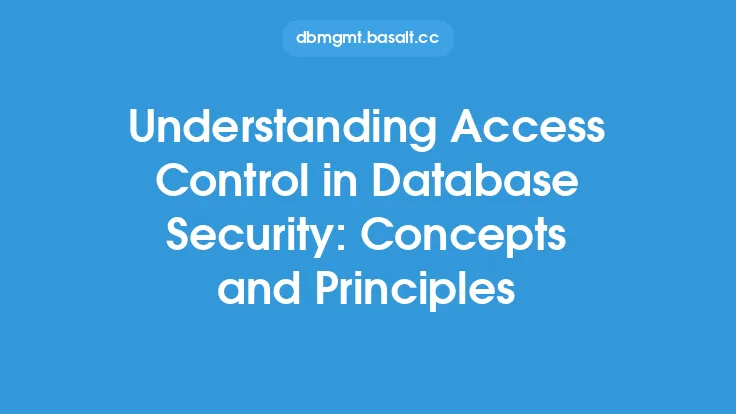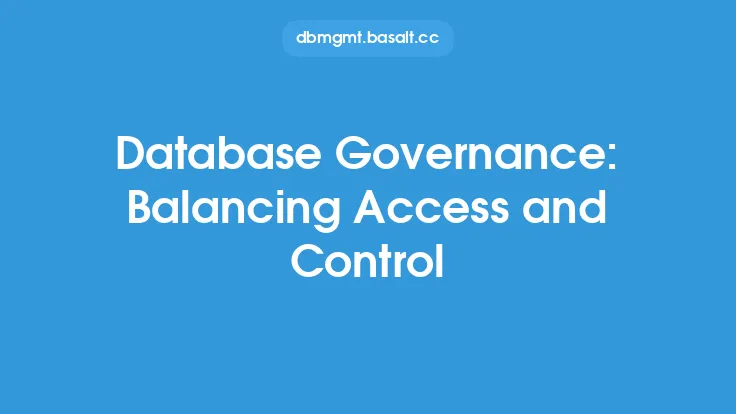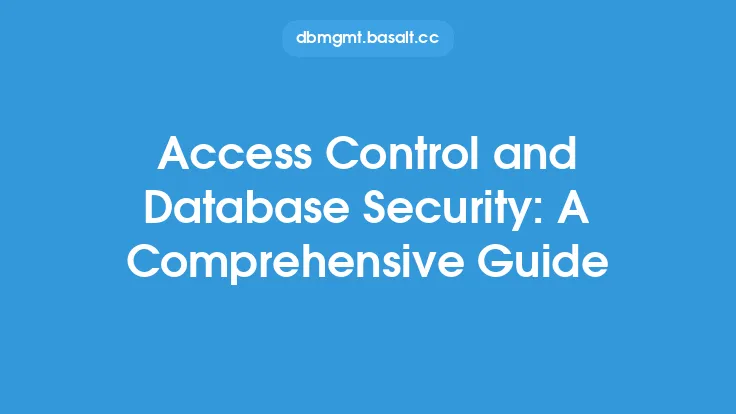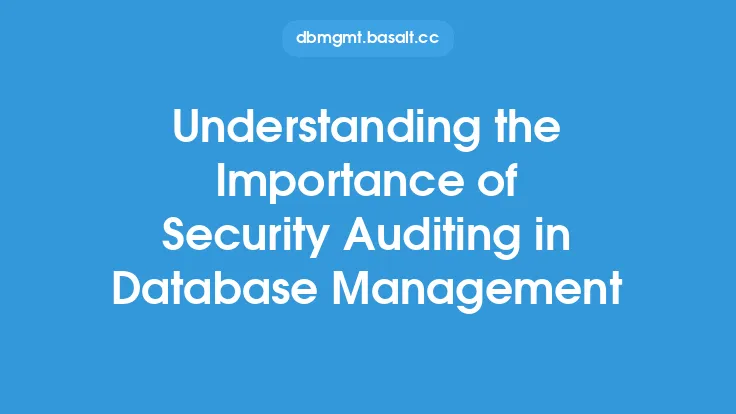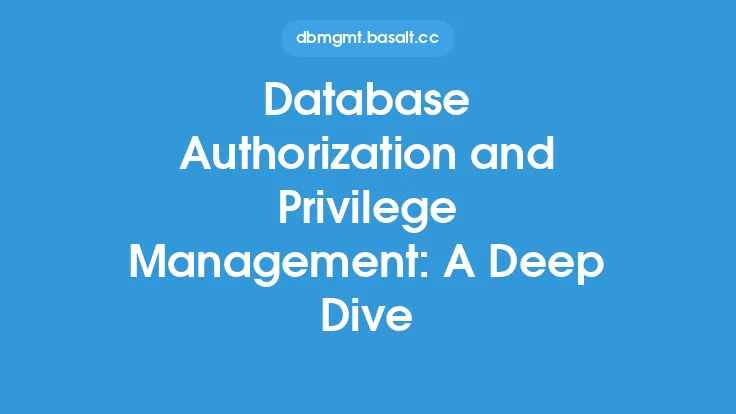Database security is a critical aspect of protecting sensitive data, and two essential components of database security are authorization and access control. While these terms are often used interchangeably, they have distinct meanings and play different roles in ensuring the security and integrity of database systems. In this article, we will delve into the differences between database authorization and access control, exploring their definitions, functions, and importance in maintaining a secure database environment.
Introduction to Authorization
Authorization is the process of granting or denying access to database resources based on a user's identity, role, or privileges. It involves determining what actions a user can perform on a database, such as reading, writing, or executing specific queries. Authorization is typically based on a set of rules, known as authorization policies, which define the permissions and access rights for each user or group. These policies can be based on various factors, including user identity, group membership, role, or other attributes. The primary goal of authorization is to ensure that only authorized users can access and manipulate sensitive data, thereby preventing unauthorized access, data breaches, or other security threats.
Understanding Access Control
Access control, on the other hand, refers to the mechanisms and procedures used to regulate and manage access to database resources. It involves controlling who can access the database, what actions they can perform, and under what circumstances. Access control can be implemented at various levels, including network, system, and application levels. It encompasses a range of techniques, such as authentication, authorization, and auditing, to ensure that only authorized users can access the database and perform specific actions. Access control is essential for preventing unauthorized access, data theft, or other malicious activities that could compromise the security and integrity of the database.
Key Differences Between Authorization and Access Control
While authorization and access control are closely related, there are key differences between them. Authorization is primarily concerned with granting or denying access to database resources based on user identity, role, or privileges. In contrast, access control is a broader concept that encompasses the mechanisms and procedures used to regulate and manage access to database resources. Authorization is a critical component of access control, as it provides the framework for determining what actions a user can perform on a database. However, access control involves additional aspects, such as authentication, auditing, and network security, which are essential for ensuring the overall security and integrity of the database.
Authorization Models and Techniques
There are various authorization models and techniques used in database systems, including discretionary access control (DAC), mandatory access control (MAC), and role-based access control (RBAC). DAC is a traditional authorization model that grants access to database resources based on user identity and ownership. MAC, on the other hand, is a more restrictive model that enforces access control based on a set of rules and policies. RBAC is a popular authorization model that grants access to database resources based on user roles and privileges. Each of these models has its strengths and weaknesses, and the choice of authorization model depends on the specific requirements and security needs of the database system.
Access Control Mechanisms and Techniques
Access control mechanisms and techniques are used to implement and enforce access control policies in database systems. These mechanisms include authentication protocols, such as username/password, Kerberos, or smart cards, which verify the identity of users and devices. Access control lists (ACLs) and access control matrices are used to define and manage access control policies, while auditing and logging mechanisms provide a record of all access attempts and actions performed on the database. Network security mechanisms, such as firewalls and intrusion detection systems, are also essential for preventing unauthorized access to the database.
Best Practices for Implementing Authorization and Access Control
Implementing effective authorization and access control mechanisms is critical for maintaining a secure database environment. Best practices include implementing a least privilege approach, where users are granted only the necessary privileges and access rights to perform their tasks. Regularly reviewing and updating access control policies and authorization rules is also essential for ensuring that they remain effective and relevant. Additionally, using encryption and other security mechanisms, such as secure sockets layer (SSL) or transport layer security (TLS), can help protect data in transit and prevent unauthorized access.
Conclusion
In conclusion, database authorization and access control are two essential components of database security that play critical roles in protecting sensitive data. While they are related, authorization is primarily concerned with granting or denying access to database resources based on user identity, role, or privileges, whereas access control encompasses the mechanisms and procedures used to regulate and manage access to database resources. Understanding the differences between authorization and access control is essential for implementing effective security measures and ensuring the integrity and confidentiality of database systems. By following best practices and using various authorization models and access control mechanisms, organizations can protect their sensitive data and prevent unauthorized access, data breaches, or other security threats.
